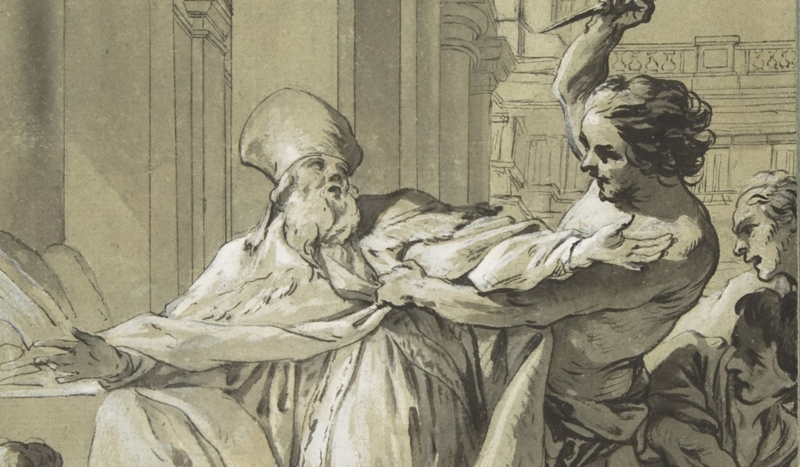
The Martyrdom of St. Thomas Becket, Archbishop of Canterbury by Jean-Baptiste Marie Pierre
CV NEWS FEED // Dec. 29 marks the feast of St. Thomas Becket, the Archbishop of Canterbury whose murder in 1170 at the hands of King Henry II shocked the Catholic world and elevated him to the status of “Christ’s nobility.”
According to the Becket Story, Becket was born in 1120 in London and was ordained a deacon in 1154 after several years of studies in different fields, including canon law. Following his ordination to the diaconate, he became the Archdeacon of Canterbury, which involved Church administration and maintaining relationships with the King of England.
Henry II ascended the throne the same year Becket was ordained a deacon, and the two formed a friendship. Henry also appointed Becket to the position of chancellor of England, according to Franciscan Media. Becket lived a luxurious life, as a high-ranking churchman in court would have in that era. However, when Henry decided to appoint Becket as Archbishop of Canterbury in 1161 following the death of the previous Archbishop, Theobald, Becket underwent a conversion of sorts.
The new Archbishop of Canterbury began to change his entire way of life and resigned his chancellorship, focusing instead on prayer and almsgiving. His new lifestyle created conflict with Henry, who disagreed with Becket as to the respective powers and responsibilities of the Church and state, according to the Becket Story.
The struggle between the two men escalated over the years, with Becket refusing to humor the king’s wishes and especially remaining firm on the issue of excommunication. He refused to absolve several excommunicated bishops that Henry wanted brought back into the Church, and the king reportedly reached a breaking point when he exclaimed “Will no one rid me of this troublesome priest!”
Four of Henry’s knights believed the king truly wished Becket to be killed, and murdered Becket in the Canterbury Cathedral Dec. 29, 1170.
According to the Becket Story, “The murder of Archbishop Thomas Becket stunned the whole of Christendom. All across Europe he was acclaimed as a martyr, and in 1173 Pope Alexander III … canonised him.”
Henry underwent public penance at Becket’s tomb in 1174 to atone for his part in the saint’s death. Becket’s heroic death contributed to the decision of the 13th century Church to place his feast day in the same week as Christmas, making him part of “Christ’s nobility,” according to the English Diocese of Hexham and Newcastle.
Becket became a popular saint in the Middle Ages, especially in London. According to the Becket Story, a celebration feast would be held every year Oct. 29 at the house of the newly-elected mayor of London, after which attendees would process through the city, stopping at various locations associated with the saint.
The Hospital of St. Thomas of Acre, Becket’s birthplace, was an especially frequented place after Christmas. According to the Becket Story, “It looks as though there were links being made between the birth of Christ and that of the city’s own saint, at the place of his birth, and in the season of his own birth and martyrdom.”

